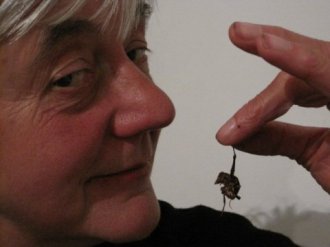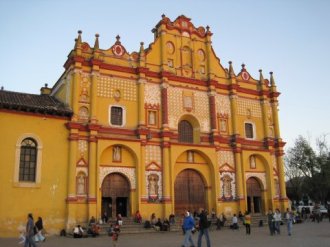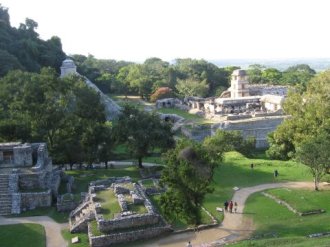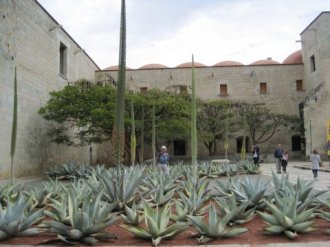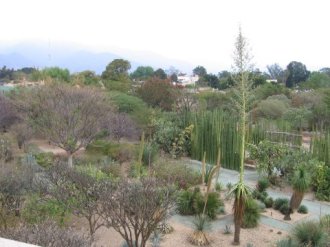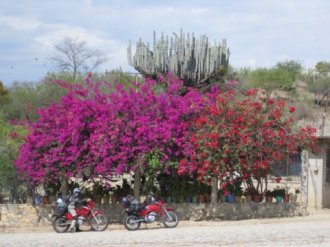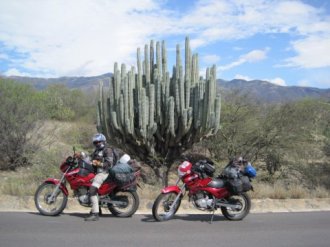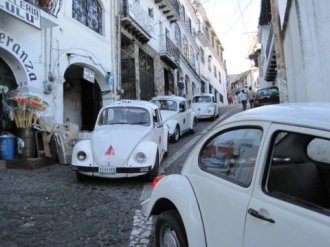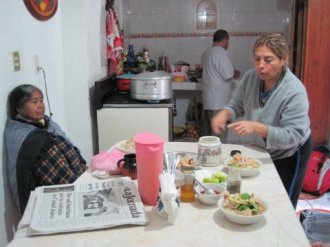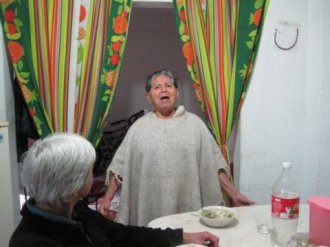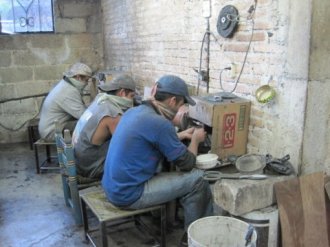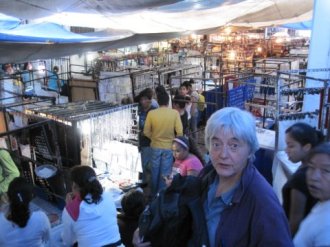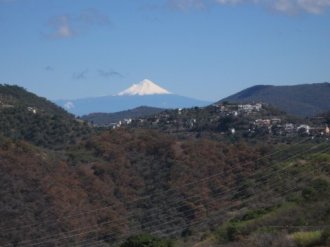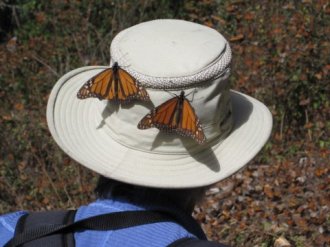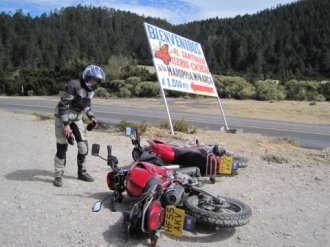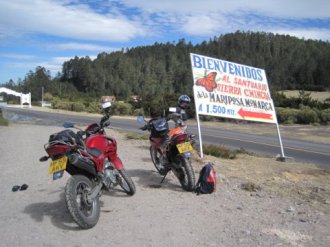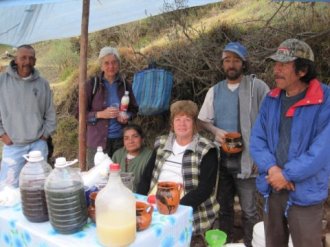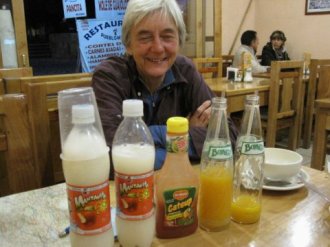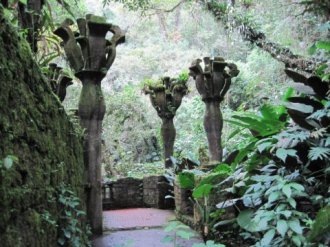Mexico Part 1
Mexico is a large country.....Part 1, 25 January to 11 February 2010
What do you think of when you hear the word Mexico? With all the negative publicity about the drug wars and illegal immigrants, chances are it's pretty negative unless you know the country. We were so sorry to leave Guatemala, we were not that excited about Mexico and our first stop to get cash was at a huge Walmart which depressed us enormously. Thats the end of the real Central America proper we thought gloomily
So when we arrived in San Cristobal de las Casas in the Chiapas region, we were very pleasantly surprised. Lovely colonial city, beautiful buildings, fantastic mole poblano (great Mexican dish) and friendly people.
Well Pat thought it was good.The local speciality in San Cristobal is fried grasshoppers.
San Cristobal at sunset
It just got better and better. The Mayan medicine museum is fascinating with a garden full of medicinal herbs and a graphic video of Mayan birthing techniques. The woman kneels with her arms around her husband, who sits in a chair in front of her while the midwife hovers close by administering herbal potions.
Palenque
We decided to take a bus tour to the major Mayan ruin at Palenque and were glad we did. 200 slow kms in bad weather through endless villages each with its own set of Topes or speedbumps, many unmarked, and at least one unofficial roadblock. However, travelling in a minibus with other tourists all day reminded us exactly why we travel by bike. When we got back 18 hours later (the bus broke down), we discovered the road outside our hostal had been dug up, so that made for an interesting exit the next day.
Pat faces a challenge straight after breakfast
Next stop was Oaxaca where we checked out the mescal (strong) and the chocolate (yummy) and also gorged ourselves on culture. The Santo Domingo Cultural Centre details the whole of Mayan history to the modern day - there are 56 indigenous languages still spoken in Mexico, 15 of which are spoken in Chiapas and big efforts are made to keep indigenous culture alive. Miracle really what with the appalling oppression by the Spanish Conquistadors and successive governments into recent times. Housed in a wonderful old monastery building, the Centre overlooks the extraordinary Botanical Gardens more varieties of cacti than you can imagine.
Outside the cultural centre Oaxaca
Oaxaca cactus collection
Roads in Mexico are a dramatic improvement on the rest of Central America suddenly we were able to do 350 to 400 kms in one day, even without going on the toll roads, which are very expensive. We stayed mainly in the highlands, which meant it was cold for most of the time. However the landscape was very varied and the colonial towns founded by the Spanish conquistadors and the missions that followed were all quite beautiful and interesting.
Mexico Highlands
Roadside flowers
The scenery varies tremendously
Our favourite town by far was Taxco an incredibly picturesque ancient silver-mining town, splashed up a steep hillside with whitewashed buildings and precipitous, narrow cobbled streets. The town taxis, 300 of them, are old white VW beetles, with the front passenger seat taken out. The town is deservedly a national monument and totally unspoilt even at the edges. Sixty percent of the population is involved in the silver trade, whether designing, making or selling silver.
Taxco taxis
We arrived in the dark after a long days ride in the rain, cold, tired and wet to find our hostal in an alleyway too narrow to turn the bikes in and the entrance up several steep steps. Having laboriously unloaded everything, we set off to find somewhere to park. Finally spotted a rare flat space that said parking and rode in its chucking it down and Ive had a serious sense of humour failure . The owner of the parking lot takes one look at us and invites us in to her kitchen for huge mugs of coffee and big slices of cake!
The next day it is still pouring down with rivers of water cascading down the streets, so we pop back to pay for another nights parking and Rosa and her mother insist we stay for lunch a fabulous Mexican speciality called Posole.
Lunch with Rosa Posole in foreground
Five hours later we stagger off replete with food and the potent home-brewed mescal (cactus liquor), our heads ringing with the protest songs composed by and sung to us by Rosas mother. Felicita is in town to see the lawyer about compensation for family land that was stolen from her by foreign mining companies who illegally bought it off her local authority .
Felicita singing her protest songs
Next day, we meet a couple of Mexican ladies over breakfast, who discover that Pat is learning silver-smithing and send us off to the top silver emporium in town. Stunning stuff at a price and we blag a tour of their workshop and explanation of all their machinery Pats in seventh heaven and I find it pretty interesting too. We meet the ladies in the afternoon and they take us to a family silver workshop on a much smaller scale up on a hill on the outskirts. Four boys are polishing jewelry and the four-year old is playing snakes and ladders with lumps of silver.
The boys polish the silver
Back to the parking lot to book another night and the family have been waiting for us oops! Rosas multi-lingual daughter Fanny is home from university, a couple of Rosas brothers and Rosas mother are also there and its more food, another stunning posole cooked by Fanny. This time were armed with flowers and beer.
Its stopped raining now and were trying to leave Taxco, but its the big weekly silver market today and Rosa insists we visit. Imagine a three-storey rugby pitch rammed with four foot wide silver stalls, heaving with locals, retailers from all over the country and the odd tourist. Rosa and her brother have their own stalls in the parking lot as well
Pat is boggled by all the silver on display
We give up the unequal struggle, check out of the hostel and move in with the family who refuse payment. However we insist on continuing to pay for the bike parking! On our last morning, gloriously clear and sunny after all the rain, five of us cram into a beetle taxi to go up to the Mirador and at last we can see snow-clad volcanoes in the distance.
Volcano Popacatapel from Taxco Mirador
Were off to see the Mariposas the Monarch butterflies, one of natures most amazing phenomenons. Millions of butterflies make the hazardous 4000km journey from the Great Lakes region of the US and Canada to winter in the warm forests of Michoacan state it takes five generations of butterflies to complete the journey. Sod the elusive resplendant Guatemalan quetzals for once were in the right place at the right time!
However the rain that imprisoned us in Taxco wrought havoc in central Mexico. Severe floods had wrecked roads and bridges and the nearest village to the butterflies suffered a landslide; thirty people died and the sanctuary was closed. We cautiously rode along an officially closed road (large chunk missing), nervously skirted some very sinister-looking masked police, all in black and armed to the teeth, outside the local tourist office in a nearby town. With a wide detour, we got to the unpronounceable but lovely little town of Tlalpujahua, spitting distance from another butterfly reserve.
We got to see the butterflies after riding up a slippery dirt track and then hiking through the forest with our compulsory guide, who was grumpy because we insisted on walking rather than hiring horses (unpredictable brakes) with other tourists. In a sunny clearing, suddenly the path was blocked with a living carpet of brown and golden Monarchs. The trees, green everywhere else, were brown and gold. The air was full of them. They landed on our hats, on our clothes, on our hands. We were spellbound.
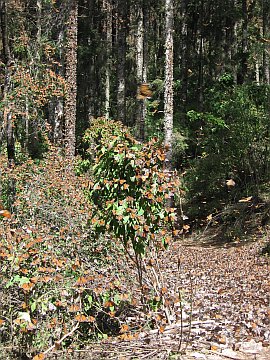
Millions of Monarchs
Look at a close up from this picture
Monarchs on my hat
It was a pity I fell off at the entrance when I stopped to take a photo and took Pat with me. And a pity my ribs landed on her front wheel. Three weeks of not being able to sleep on my left side. Ho hum
Sorry Pat my fault!
The picture I meant to take
Back in town we discovered pulque at a roadside stall run by a strange old lady called La Guerra and drank far too much. Pulque is a cloudy, fermented agave cactus drink, and particularly popular in this area.
The pulque stall
Pat's been at the pulque
We avoided Mexico City which is huge, so we had to skirt round the top of it to get to Xilitla which involved a spectacular but freezing cold ride over the Sierra Gorda through a stretch of high desert, followed by a steep descent through thick fog to Jalpan. There are five stunningly beautiful mission churches in this area, founded by Franciscan monks in the 18th century.
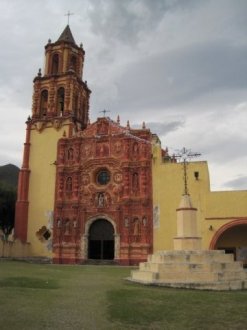
Franciscan mission highly decorated on the outside and very plain and simple on the inside
We were headed for Las Pozas, the bizarre realization of a dream by Sir Edward James, an eccentric English aristocrat. His friend Salvador Dali reputedly said he was crazier than all the Surrealists put together. Set against a cliff in the heart of the jungle, Las Pozas is a riot of weird concrete buildings, steps leading to who knows where, columns, huge flowers, all in concrete, once riotously coloured and now mouldering away gently as the jungle reclaims its own. We met an old gardener whod worked there at the height of Edwards interest in the place, one of more than 70 local workmen, hacking at the jungle and pouring concrete to make exotic cages for flamingos and pumas.
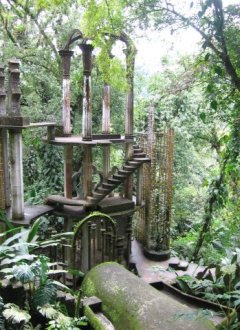
Las Pozas Garden
Las Pozas Garden
Las Pozas Garden
END OF PART ONE

